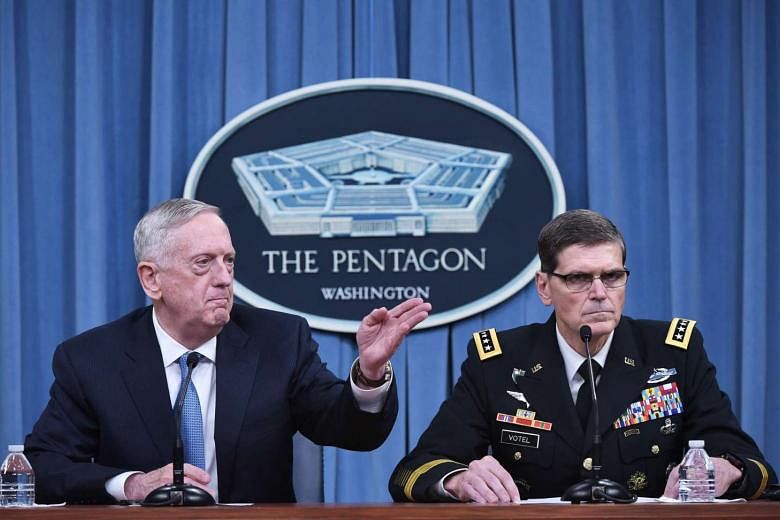WASHINGTON • As worries deep- ened last week about whether North Korea would conduct a missile test, the White House declared that ordering a US aircraft carrier towards the Korean peninsula would send a powerful deterrent signal and give President Donald Trump more options in responding to the North's provocative behaviour.
The problem was the carrier, the USS Carl Vinson, and the four other warships in its strike force were at that moment sailing in the opposite direction - to take part in joint exercises with the Australian navy in the Indian Ocean.
White House officials said on Tuesday they were relying on guidance from the Defence Department. Officials there described a glitch-ridden sequence of events, from a premature announcement of the deployment by the military's Pacific Command to an erroneous explanation by Defence Secretary Jim Mattis - all of which perpetuated the false narrative that a US armada was racing towards the Korean peninsula.
By the time the White House was asked about the USS Carl Vinson on April 11, its imminent arrival had been emblazoned on front pages across East Asia, fanning fears that Mr Trump was mulling over a pre-emptive strike on North Korea.
The saga of the wayward carrier might never have come to light, had the navy not posted a photograph on Monday of USS Carl Vinson sailing through the Sunda Strait, which separates the Indonesian islands of Java and Sumatra. The picture was taken last Saturday, four days after White House press secretary Sean Spicer described its mission. The strike group is now heading to the Western Pacific "as a prudent measure", US Pacific Command spokesman Dave Benham said yesterday.
The White House declined to comment on the misunderstanding, referring questions to the Pentagon. Privately, however, other officials expressed bewilderment that the Pentagon did not correct its timeline, given the tensions surging in the region and the fact that Mr Spicer and National Security Adviser H.R. McMaster were publicly answering questions about it.
Officials' nebulous - if not deliberately misleading - statements about USS Carl Vinson illustrate the administration's attempt to deliver a dual message: illustrating a willingness to employ force against a dangerous adversary while steering clear of steps that could spiral out of control.
"The Trump administration, having looked at the options, is speaking out of both sides of its mouth, which if done deliberately is good policy," said Mr Patrick Cronin, an Asia expert at the Centre for a New American Security. "The idea is that we have the means of striking back, but we're not going to make the mistake of starting a war."
Analysts said the US is betting that its tough talk will prompt China to use the weight of its trade ties with North Korea to help avoid a conflict on its border.
NYTIMES, WASHINGTON POST, XINHUA, BLOOMBERG

